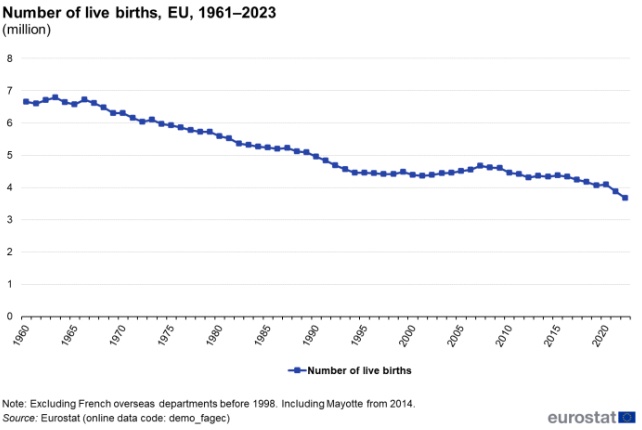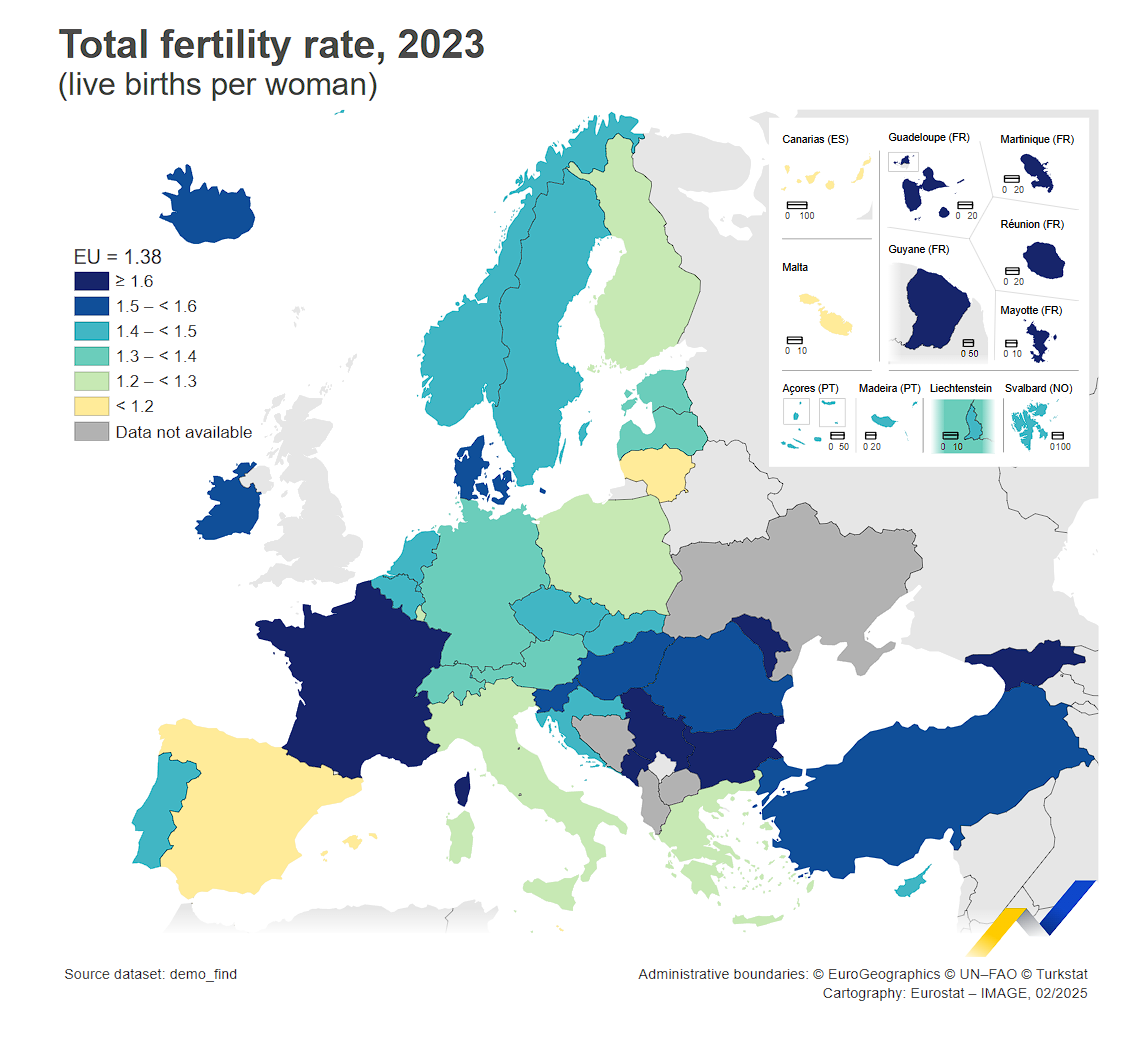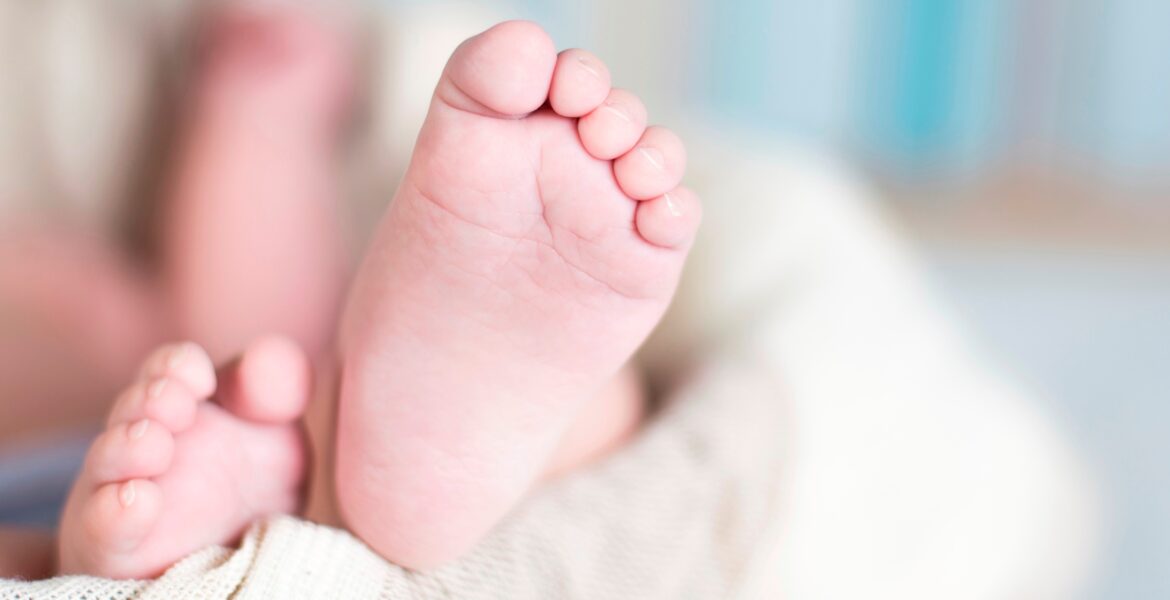An Aging Population
New data from Eurostat shows a record drop in the number of children born in the European Union for the year 2023.
There were only 3.67 million births for the entire year, marking a 5.4% decrease compared to the previous year, highlighting the demographic crisis facing the Union.
Across all 27 countries, the fertility rate stands at 1.38 births per woman, down from 1.46 in 2022. These figures are significantly lower than the 2.1 births required for the “replacement level,” where the population can remain stable.

This represents the largest annual drop since 1961. – Eurostat
As shown in the chart, births in Europe have been steadily declining since the mid-1960s. As a result, Europe has an aging population, with several countries facing labor shortages.
Bulgaria is at the top of Europe with the highest birth rate at 1.8, followed by France with 1.66 and Hungary with 1.55.
On the other end of the spectrum, Malta has the lowest rate at 1.06, Spain at 1.12, and Lithuania at 1.18.
Greece is very close to the bottom, with a rate of 1.26.
The average age of women having their first child continues to rise, from 28.8 years in 2013 to 29.8 years in 2023.

Despite having more deaths than births, Europe’s total population increased by 1.6 million, reaching 449.2 million in 2023, due to migration.

